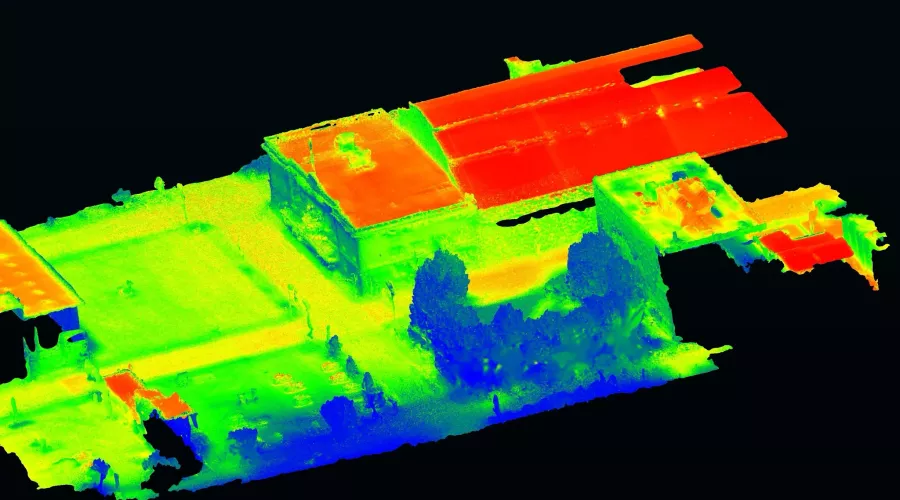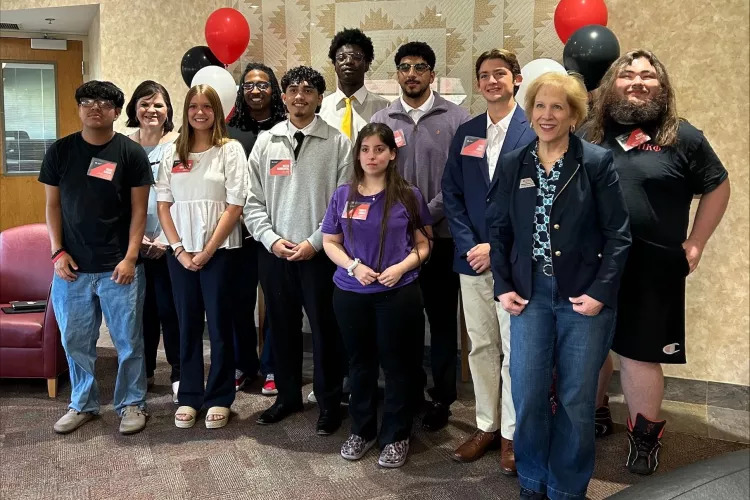UofL, TreesLouisville launch updated analysis in work to mitigate urban heat
July 23, 2025
As Louisville residents experience heat advisories this summer, the University of Louisville Christina Lee Brown Envirome Institute, in partnership with TreesLouisville, is launching a new study to aid efforts to combat the city’s severe urban heat island effect. The study will provide updated data to support future greening strategies to achieve a cooler, healthier and more resilient Louisville.
Louisville residents are well acquainted with the challenges caused by urban heat, such as higher utility bills and serious health problems that disproportionately affect residents with pre-existing health conditions.
The new study also involves Brian Stone, a professor and director of the Urban Climate Lab at Georgia Institute of Technology, whose previous work identified Louisville as having one of the fastest-growing urban heat islands in the nation.
An urban heat island exists when the built environment – buildings, sidewalks and paved roads – absorbs more heat than natural surfaces such as grass, trees and exposed soil, causing higher air temperatures. Those heat-absorbent surfaces also retain that heat during nighttime hours.
“Louisville has been at the forefront of studying urban heat for years, thanks to foundational work like our 2016 study,” Stone said. “However, the climate continues to change and the city continues to grow. This new project provides an unprecedented, highly detailed look at current temperatures and the specific cooling power of different types of vegetation in 2025. It’s about giving Louisville the most up-to-date, actionable science to make truly impactful decisions, which is especially relevant as residents are facing extreme heat right now.”
The project will use advanced climate models to generate highly detailed, hourly temperature maps for June, July and August 2025. These maps will cover the entire Jefferson County area – nearly 398 square miles – at a remarkable resolution of 100 meters, offering an unparalleled view of where heat is most intense across Louisville’s urban core. Sensors installed by the Envirome Institute around Louisville will provide data to help enrich the model. The project, supported by the James Graham Brown Foundation, begins in July and is expected to be completed within three months.
Beyond traditional temperature readings, the study will also measure factors that provide a more complete picture of actual heat stress experienced by individuals.
A key focus of this research involves an in-depth analysis of how various tree canopies reduce temperatures. Researchers will investigate which areas benefit most from new tree plantings and how different tree species — and whether they are coniferous or deciduous — impact cooling differently.
Precise insights gained from the new project also will enhance and expedite the Envirome Institute’s research into health benefits of additional greenness, including the Green Heart Project and the Trager Microforest in downtown Louisville.
“At the Envirome Institute, our mission is to understand how the environment shapes our health. This new analysis comes at a time when we are all facing tremendous heat burden,” said Aruni Bhatnagar, executive director of the Envirome Institute. “By precisely mapping urban temperatures and land cover like trees and other vegetation, we’re not just gathering data; we’re creating a powerful new tool. This research will allow us to strategically use urban greening as a direct intervention to improve public health in our downtown core and across every neighborhood in Louisville.”
The project will also analyze heat-related mortality at the neighborhood level in order to highlight areas where residents are most vulnerable to heat-related illnesses and where targeted interventions are most urgently needed to improve public health outcomes. This insight will help guide tree planting initiatives by TreesLouisville and other partners, ensuring that efforts maximize cooling benefits.
“TreesLouisville has been working tirelessly to expand our urban canopy, utilizing data from previous assessments to guide our strategic planting,” said Cindi Sullivan, executive director of TreesLouisville. “This new study will provide us with an even sharper focus, pinpointing exactly where our efforts will have the greatest impact and helping us choose the right trees for the right places to achieve significant temperature reductions for our community. This is particularly urgent as we continue to push towards our city’s goal of every neighborhood having at least 30% canopy cover.”
Article is co-authored by Ted Smith.



